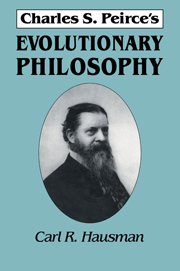2 - PRAGMATICISM AND SEMEIOTIC
Published online by Cambridge University Press: 07 January 2010
Summary
The following discussion of Peirce's pragmaticism and semeiotic will focus on five main topics. First, it will be helpful to sketch the way in which pragmaticism implies semeiotic. Second, the anticipation of semeiotic in the early series of articles, “Certain Faculties Claimed for Man” and “Some Consequences of Four Incapacities,” will be considered in order to indicate the way in which Peirce's development of his anti-Cartesianism and his departure from Kant served as a basis for his semeiotic. Third, we shall see how the keys to pragmaticism point us toward Peirce's conception of the three conditions of sign action, or what Peirce refers to by the term semeiosis. These conditions will then be discussed. Fourth, it will be found that one of the conditions of semeiosis, the object, is presemeiotic, or preinterpreted, and at the same time semeiotic. A distinction Peirce makes between two kinds of object, the immediate and the dynamical, will then be considered briefly. Finally, Peirce's classification of signs will be outlined.
Thoughts Are Signs
The implications of pragmaticism for semeiotic should be clear. Pragmaticism is a theory of meaning. The meanings of general concepts or terms, it will be recalled, are dispositions, habits, or laws that can be formulated in linguistic expressions. Insofar as these meanings are indeterminate with respect not only to vagueness but also to generality, they remain to be interpreted with respect to the particular consequences that follow from acting in accord with them. They must be interpreted with reference to the patterns of consequences that they represent.
- Type
- Chapter
- Information
- Charles S. Peirce's Evolutionary Philosophy , pp. 57 - 93Publisher: Cambridge University PressPrint publication year: 1993
- 1
- Cited by



